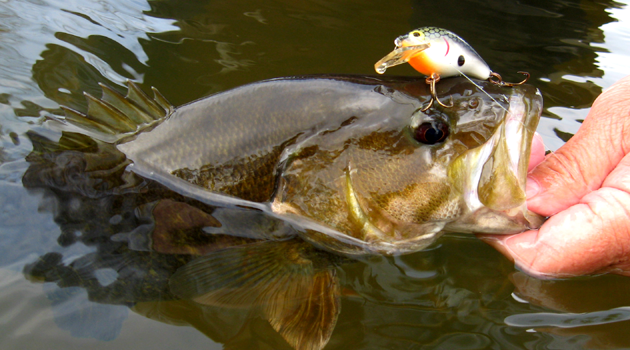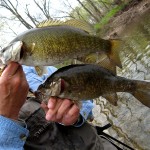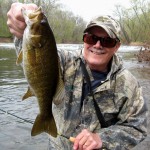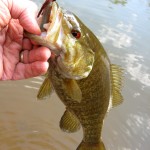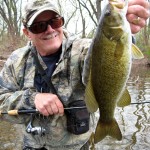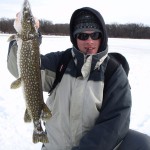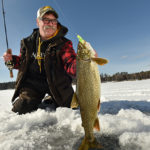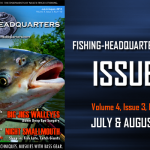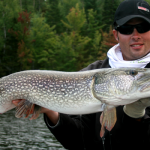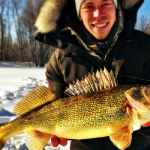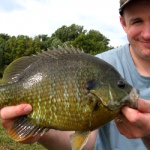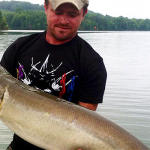By Jim Gronaw
I must admit…since I have become borderline elderly I have not had the chance to fish for stream and small river smallmouths like I used to. Things like arthritis, asthma, knee operations and bad table manners just get in the way of so many things. That’s why I recently jumped at the chance to fish for some stream smallmouths when my friend, Jud Larrimore, invited me for some ‘easy wading’. I had fished the area before, and thought that it had potential. But that lone, late summer effort produced only pint-sized smallies with a mix of sunfish and fallfish. Fun none the less, I was looking for bigger game.
We started out fishing below a small dam where several nice eddys were formed and the water was from 4 to 6 feet deep. Jud had been catching them on 1/16th ounce hairjigs so I brought a bunch of my ‘home ties’ for the party. This central Maryland gem was a tributary to the Potomac River, and I had to literally sign a blood oath of secrecy in order to fish it. Sheeesh, was a stream smallmouth really worth it?
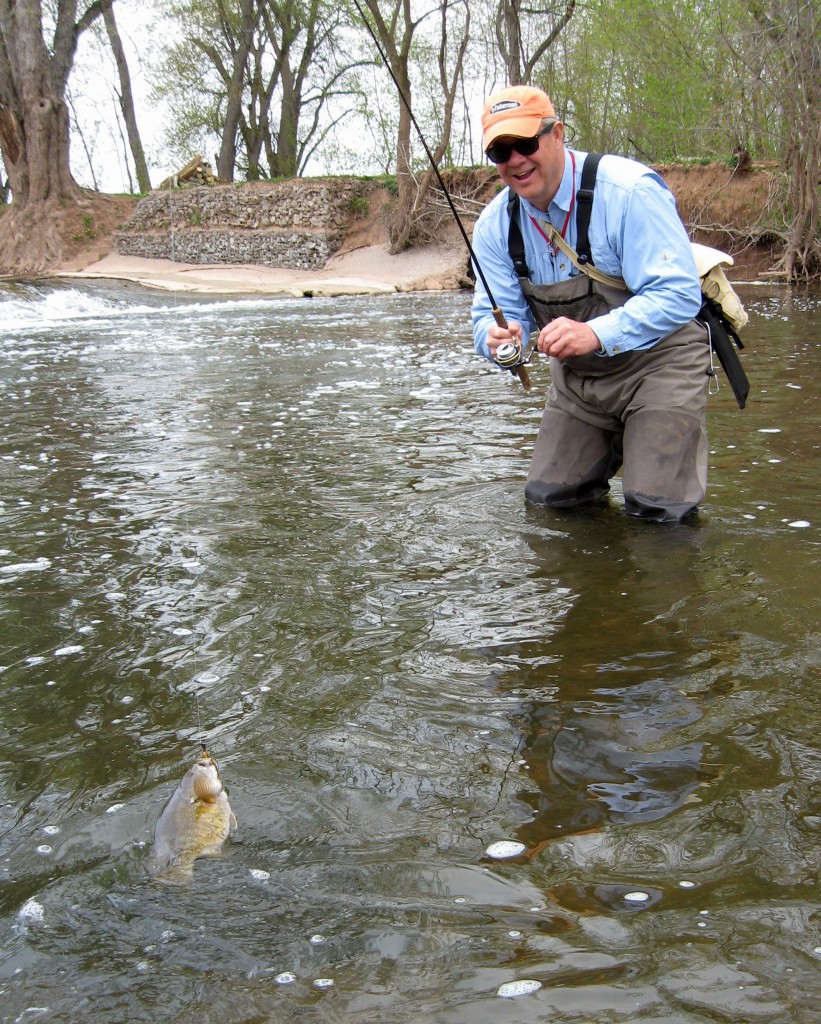 It didn’t take too many casts to realize that we had not only hit it just right, we might be onto a very special outing. I had fished many streams in the Mason Dixon region in the 1980’s to 90’s in quest of swiftwater smallmouths. Names like Conococheague, Conowago, Monocacy, Toms Creek and the Patapsco came to mind. There were many others, back in the day, when I had better legs beneath me. They were great times and great fishing, with an occasional 3 pounder to make the highlight reel. But after my third fish in five casts, I was feeling pretty good. As is often the case, the Potomac and Susquehanna get all the ink, but the tribs have some outstanding bass fishing.
It didn’t take too many casts to realize that we had not only hit it just right, we might be onto a very special outing. I had fished many streams in the Mason Dixon region in the 1980’s to 90’s in quest of swiftwater smallmouths. Names like Conococheague, Conowago, Monocacy, Toms Creek and the Patapsco came to mind. There were many others, back in the day, when I had better legs beneath me. They were great times and great fishing, with an occasional 3 pounder to make the highlight reel. But after my third fish in five casts, I was feeling pretty good. As is often the case, the Potomac and Susquehanna get all the ink, but the tribs have some outstanding bass fishing.
We simply tossed the jigs up into the faster water and allowed the them to bounce along the bottom with the current. Strikes would be either little bumps or thunderous slams. Light spinning gear and six-pound test was perfect for this, and the bass gave great account of themselves. On more than one occasion, we had doubles. Not 8 or 9 inchers, as are in so many streams, but many of our fish were 14 to 17 inches, broad and thick. Air-borne smallies were the norm. Every once in a while, we hooked a fish we had to actually chase downstream after. It was crazy fun…we should have gotten locked up for the high of it all!
After about an hour and a half of this almost non-stop silliness, we decided to go downstream for some deeper areas, just to ‘look-see’. One area below a bridge produced nothing but the next big pool showed promise, with a super large eddy and slow current with depth. Tricky wading, we managed to get into position and make long casts to the opposite shore in quest of decent fish. Jud explained that there would likely be fewer, but potentially larger, bass. I soon hooked a very large fish that I never saw…just came off…as I was using a rod much softer in action than what Jud had. He seemed to stick more fish with his medium action rod, and subsequently landed three excellent stream bass that were from 16 to 17 inches…excellent bass anywhere the water flows.
Tired but happy, we walked back to the truck and sat down for a well-earned breather. Jud went on to explain that this particular river doesn’t always host the kind of action, nor size, for the stream bass we were seeing today. Often, small streams and rivers suffer greatly from heavy spring rains and high water events that can just about wipe out an entire year class of smallmouths with just one storm or rainy week. Then again, there are the low-water opposites, when we don’t get enough volume and the fish simply can’t reach favored spawning shoals, bars and backwaters when the water reaches the 64-degree F mark. “Most years’, he explained, ‘a good spawn just doesn’t happen due to weather dynamics, and people wonder where all the bass got to. They are still there, but often holed up in deeper pools and unable to spawn successfully.’ Autumn wading with water temps down to 50 degrees can still see active fish that weren’t encountered during summer’s heat.
Indeed, this is why, in or out of season, the creed of the small stream bass angler should always be catch and release. The smaller the water, the more fragile it is. Plus, it keeps fishing going on the ‘bad spawn’ years. Just makes sense.
After a break, it was starting to rain, and Jud could see that I was debating what to do. He said…’Look…these fish are almost never up here in this number and size, if I were you I’d put my waders on and go back after them. It could be several years before you hit ‘em like this again. So what if it rains…that’s what I’m doing!’
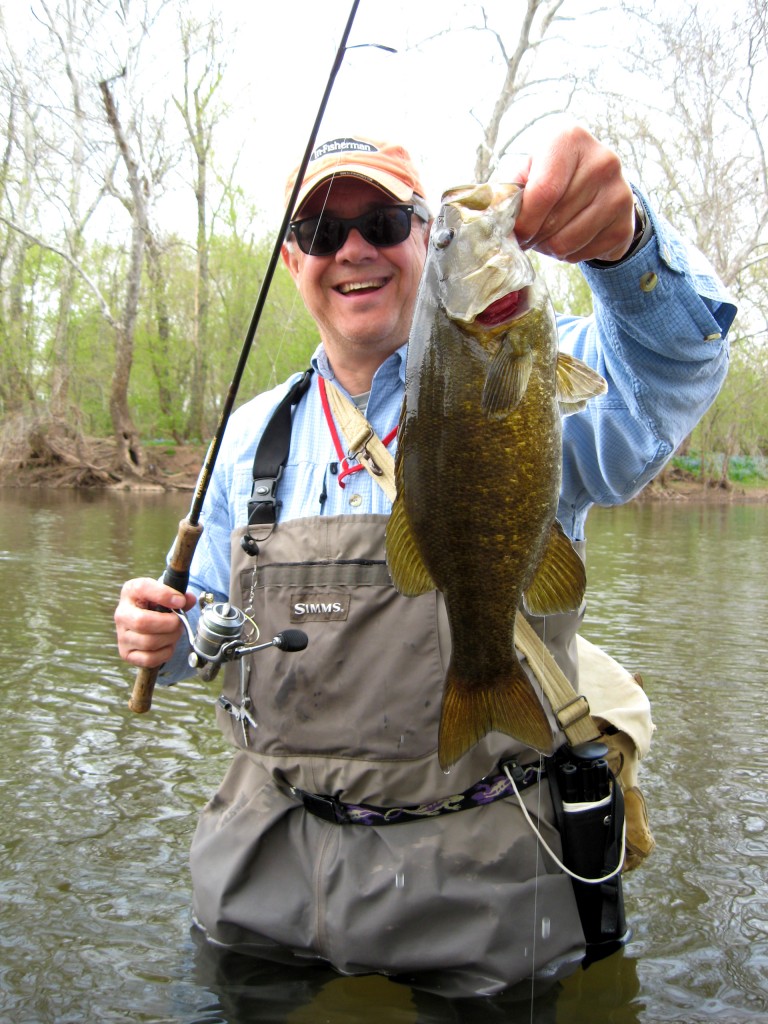
And with that, we hiked up our waders, sloshed back down the bank and fished the eddys, knocking them out for another hour before heavy rain sent us packing. Fish were everywhere, feeding on the insects that were slammed to the water by the rain, splashing all around us, attacking our jigs, jumping two feet out of the water…it was crazy! Bugs under your glasses, up your nose and in your ears…who cares? Two semi-old geezers, in the middle of the river soaking wet, swatting bugs and slamming powerhouse stream bass, all but fatigued. And giggling like a couple kids. Yes, it was a day of days.
If water levels are not too high, fall wading can produce well into the month of November in some regions of the country. Lure selection is simple, as hairjigs in 1/16th and 1/8 ounce cover most of the bases. Smaller crankbaits like the Rapala 2 inch DT4 series will get active fish as will the Bomber Square A 1 7/8th inch models. Pick your poison in terms of lure color with the hard baits, depending on the forage you wish to duplicate. For the jigs, we like browns, olives and black/red combos. For added attraction and bouyancy, a 2 inch plastic trailer of you liking will coax bigger bass from the system. Again, many options work so choose colors accordingly. We like light weight spinning gear and limp, 6-pound monos for short, accurate casts.
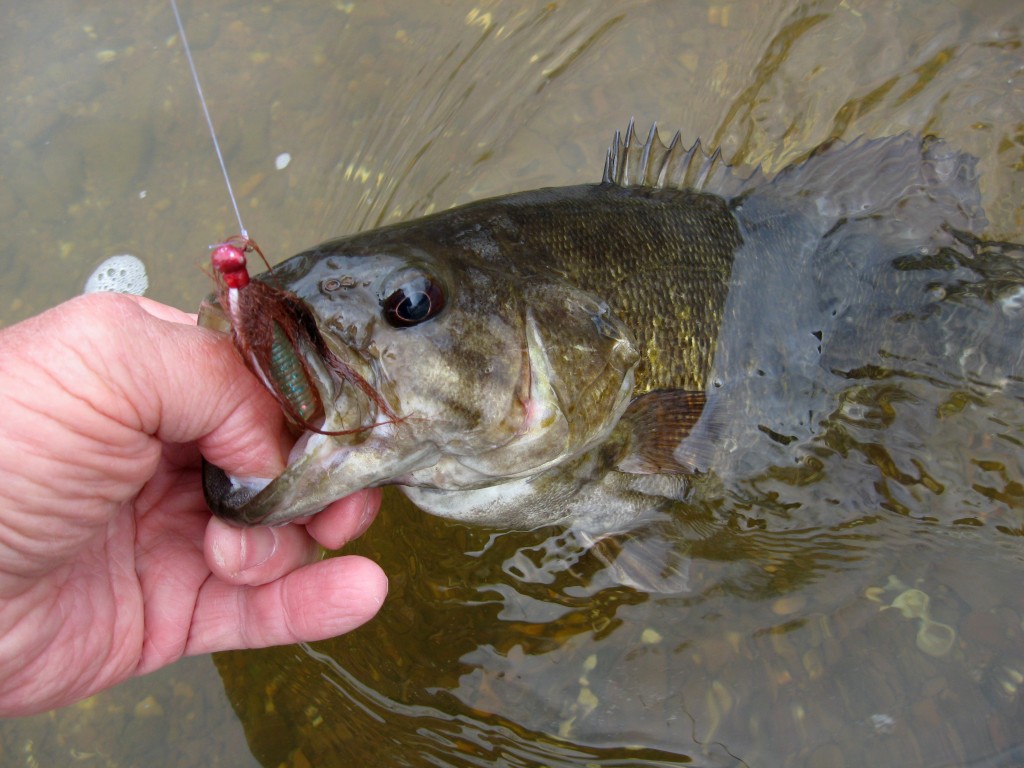
Article by Jim Gronaw, published in Fishing-Headquarters Online Magazine, issue 20, September, October & November, 2014.



